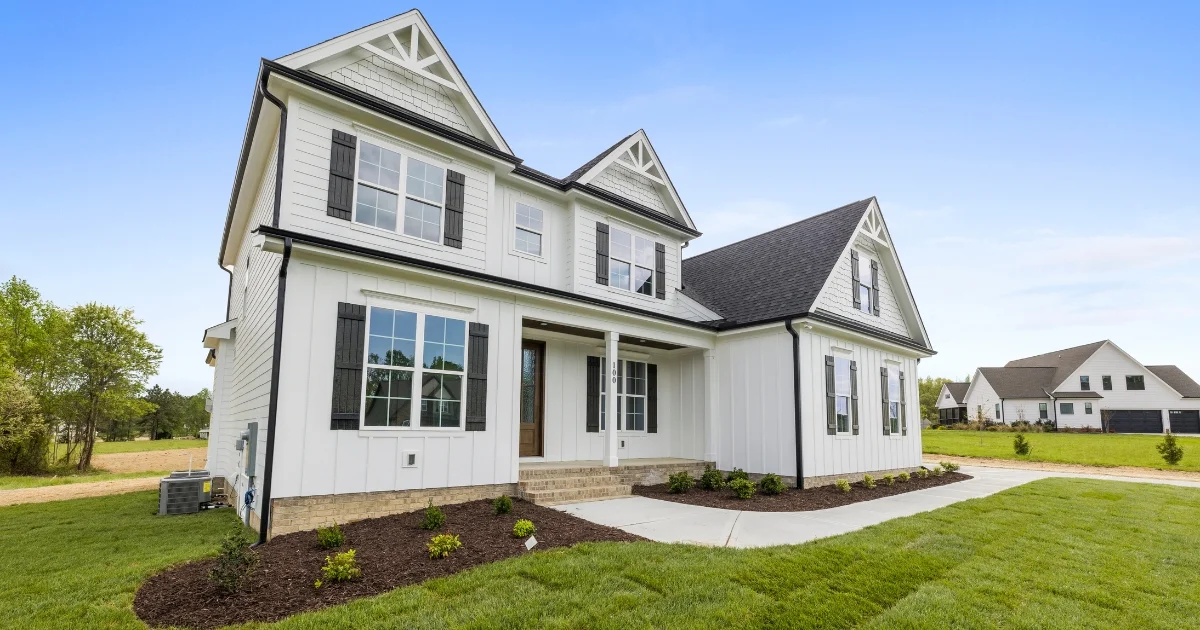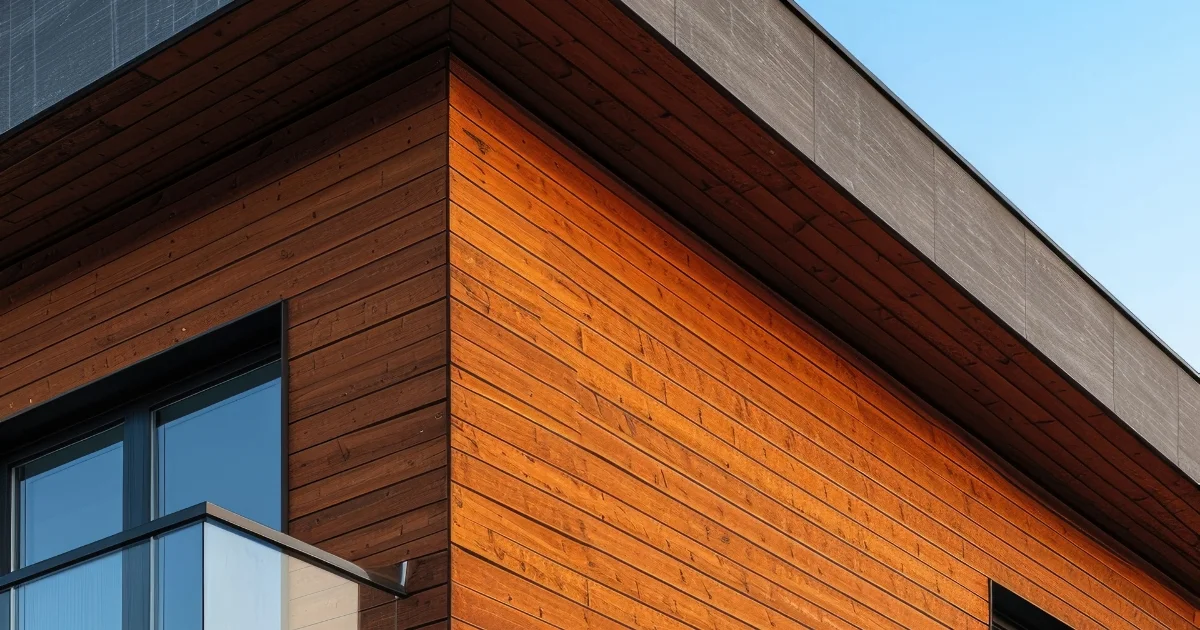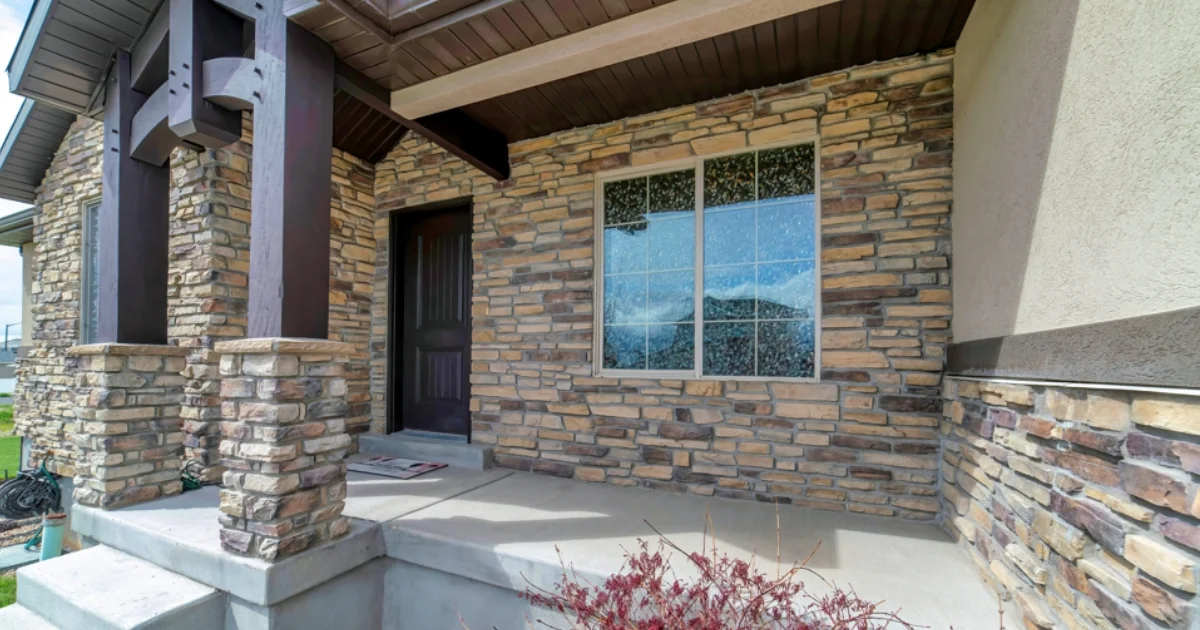
That gorgeous cedar siding looked perfect last summer — but after one brutal Canadian winter, it’s already showing signs of wear. In contrast, fibre cement on nearby homes still looks brand new, showing just how much siding performance depends on material choice. That’s not luck—it’s material science.
Canadian homeowners deal with some of the toughest exterior conditions on the planet. From -40°C Saskatchewan winters to Vancouver's endless rain, picking the right siding makes all the difference. A good choice means years of low-maintenance and peace of mind. A bad one? You’re climbing scaffolding again before the next hockey season.
How Canadian Weather Tests Home Exteriors
So, what makes Canada’s climate so hard on siding? It’s not just snow—it’s the mix of everything. Homes here need to hold up against:
Temperature swings over 60°C in some parts of the country.
Moisture in every form—rain, snow, ice, humidity.
Strong UV rays during long summer days.
Wind-driven rain that works its way into every seam.
Ice dams that push water under siding with surprising force.
The right siding can take all of this without constant maintenance. The best ones balance durability, insulation, curb appeal, and value.
Vinyl Siding: Popular and Practical for Canadian Homes
Drive through any Canadian subdivision built in the last 30 years and you'll see vinyl siding dominating the landscape.
Benefits of Vinyl in Canadian Conditions
Modern vinyl siding is durable, low-maintenance, and resistant to fading and cracking. It comes in a huge variety of colour and style options to suit any home design. With proper installation, vinyl can last 20-30 years even in challenging conditions.
Vinyl remains one of the more popular siding options for cold climates, but performance depends on proper installation and the quality of material chosen. Just like a black asphalt driveway gets hotter than light concrete, darker siding absorbs more heat, which can create problems in fluctuating Canadian temperatures.
Limitations to Consider
Standard vinyl can become brittle during severe cold snaps, potentially cracking when struck by windblown debris. During summer heat waves, lower-quality vinyl may warp or buckle if expansion gaps aren't accounted for during installation.
Southern exposure presents the biggest challenge for vinyl, as UV degradation over time can cause fading and brittleness. Homeowners in Canada's coldest regions should consider premium vinyl grades specifically designed for extreme temperature resilience.
Composite Siding: Balancing Natural Beauty and Performance
Composite siding offers the beauty of wood with the durability of engineered materials —perfect if you love the look of wood but want a low-maintenance option.
Advantages for Canadian Homes
Modern composite siding offers significantly better moisture resistance than traditional wood siding. Better dimensional stability means less expansion and contraction during seasonal temperature shifts. Many products come prefinished with factory-applied coatings that extend service life.
The natural insulating properties help improve energy efficiency, while the authentic wood grain patterns maintain traditional architectural aesthetics that vinyl simply can't match.
Weather-Related Challenges
While composite siding represents a substantial improvement over traditional wood siding, it remains more vulnerable to moisture issues than vinyl. Proper installation with appropriate flashing, adequate ground clearance, and regular maintenance becomes essential for longevity.
Coastal homes with high precipitation levels may require more frequent upkeep to maintain siding performance.
Wood Siding: Timeless Appeal with Special Considerations
For a timeless and classic look, wood siding offers natural warmth and charm that manufactured alternatives still can't quite replicate.

Benefits in Canadian Settings
Wood siding provides excellent natural insulation properties, helping maintain comfortable indoor temperatures through seasonal extremes. With proper care, wood siding can last for many years. Its natural flexibility helps it withstand some movement during freeze-thaw cycles without cracking.
Special Considerations for Canadian Climate
Wood requires more maintenance than other siding options. Regular sealing, staining, or painting becomes essential to prevent moisture absorption, UV damage, and insect infestation. In Canada's harsh weather conditions, this maintenance might need to happen every 3-5 years.
The material naturally expands and contracts with temperature and humidity changes, requiring proper installation techniques to accommodate this movement.
Stone Veneer: Premium Protection with Timeless Appeal
Whether used as a stunning accent wall or to cover your entire home, stone veneer creates striking curb appeal while providing exceptional protection against Canadian weather extremes.

Unmatched Weather Resistance
Stone veneer products, when properly installed, easily withstand decades of freeze-thaw cycles, moisture exposure, and temperature fluctuations. Unlike natural stone, these engineered products weigh significantly less while delivering similar appearance and durability benefits.
The material naturally resists fire, impact damage, insect infestation, and all forms of deterioration common to other siding types.
Practical Considerations
The premium appearance comes with premium pricing. Stone veneers typically rank among the most expensive siding options initially, though this investment often pays dividends through exceptional longevity and minimal maintenance requirements.
Professional installation becomes critical with stone veneer, as can trap moisture behind the surface and lead to structural issues if not installed correctly.
Aluminum Siding: Practical Durability for Canadian Weather
A practical choice for homeowners who want a durable and low-maintenance exterior, aluminum siding has been protecting Canadian homes for generations.
Advantages in Canadian Conditions
Aluminum siding offers exceptional resistance to moisture in all forms. It won't rot, warp, or swell when exposed to rain, snow, or high humidity levels. Unlike vinyl, aluminum maintains its structural integrity even in extreme cold, never becoming brittle or crack-prone during winter's deepest freezes.
Considerations for Aluminum
The material can dent more easily than some alternatives, especially in areas prone to hail or windblown debris. Older installations may show fading over time, though modern finishes have improved significantly in UV resistance. Aluminum conducts heat, but modern installations often include insulating backers to improve energy efficiency.
Regional Considerations Across Canada
Canada's geography creates different siding needs depending on where you live. Here's how to choose the best siding for your region:
Atlantic Canada
The Maritime provinces face challenges with salt-laden air, frequent freeze-thaw cycles, and high humidity. In these conditions:
Fiber cement and high-quality vinyl resist salt air corrosion best
Wood siding needs frequent maintenance due to constant moisture
Stone veneer works well but needs good drainage for frequent rain
Metal should be marine grade with better corrosion protection
Halifax homeowners see reliable results with composite siding that has built-in moisture barriers designed for coastal conditions.
Central Canada (Ontario/Quebec)
With big seasonal temperature shifts and heavy winter snow:
Insulated vinyl siding helps handle the major temperature changes
Aluminum works well but needs insulated backing to reduce heat loss
Stone veneer looks great in urban areas where appearance justifies the cost
Wood needs regular upkeep but performs well when properly maintained
The freeze-thaw cycles near the Great Lakes mean proper installation with the right expansion gaps is crucial for any siding material.
Prairie Provinces
The Prairies' dry climate with extreme temperature swings creates special challenges:
Metal siding handles intense UV exposure and occasional hail best
Premium vinyl with UV protection prevents damage from strong summer sun
Wood siding can dry out and crack without proper sealing
Composite materials must be rated for extreme temperature ranges
Winnipeg and Edmonton homes benefit from siding with better impact resistance because of the severe hailstorms that can damage lesser materials.
West Coast
Vancouver and coastal BC's rainy climate demands excellent moisture management:
Fiber cement performs exceptionally well in constantly wet conditions
Rain screen installation methods are essential no matter what material you choose
Wood requires regular maintenance but remains popular for its looks
Professionally installed composite siding with mold resistance works well
Proper flashing and ventilation behind siding is more important here than in other parts of Canada.
Common Mistakes When Choosing Siding for Canadian Homes
Even the best siding for Canadian climate conditions can wear out faster than expected if key details are missed during planning or installation. These common mistakes are easy to avoid—but costly if overlooked:
Choosing by price alone – Budget-friendly vinyl may save money upfront, but lower quality often leads to repairs and early replacement.
Ignoring local climate – Not all siding options for cold climates work equally everywhere. What handles dry Calgary winters might fail in Halifax’s humid conditions.
Skipping insulation – Siding isn’t a complete solution for energy efficiency. Without proper insulation behind it, even high-end materials won’t perform well in extreme cold.
Hiring the wrong installer – Poor installation can lead to leaks, trapped moisture, and structural problems. Skilled installers who understands Canadian weather siding needs is crucial.
Neglecting maintenance – Even low-maintenance materials benefit from seasonal checks. Small repairs prevent big issues later.
The Energy Efficiency Factor
Siding contributes significantly to home energy efficiency. Options that include built-in insulation or accommodate additional insulation layers can dramatically reduce heating costs during long Canadian winters.
If you're planning to replace your siding anyway, it's the perfect opportunity to boost your home's energy efficiency by adding insulation inside your walls at the same time.
Making the Right Choice for Your Home
When you're comparing siding options for cold climates, it’s not just about looks—it’s about how well your siding handles everything Canadian weather throws at it. From coastal moisture to prairie deep freezes, your home needs a siding solution built for where you live.
Here’s what to factor in when choosing the best siding for Canadian climate conditions:
Your regional weather patterns (coastal rain, dry prairie air, major freeze-thaw cycles)
Long-term value vs. upfront cost
How each material complements your home’s style
How much time you’re willing to spend on maintenance
How well the siding contributes to your home’s overall energy efficiency
Whether it’s vinyl, aluminum, composite, or stone veneer, the real difference between siding that holds up—and siding that doesn’t—comes down to expert installation. With over 50 years of hands-on experience in Kitchener-Waterloo and the surrounding area, Rick MacDonald's team knows how to install siding that lasts.
Don’t let another winter, rainstorm, or heatwave damage your home’s exterior. Contact us for a free, no-obligation estimate and let us help you choose the right fit. Our showroom features all the top Canadian weather siding options—so you can see and feel the difference before making your decision.
